December 15, 2022
Today in Microsoft Flight Sim I’m going to be flying the Nieuport 17, one of the premier French fighter planes of the First World War.
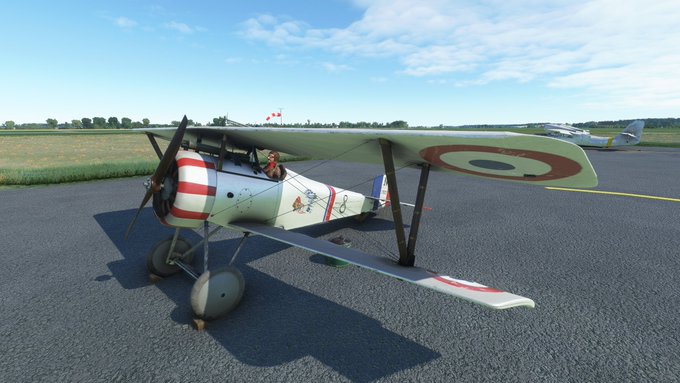
Introduced in early 1916, the Nieuport 17 was the first French plane to make use of the German-invented synchronized machine gun, timed to shoot through the blade of the propeller as it spun.
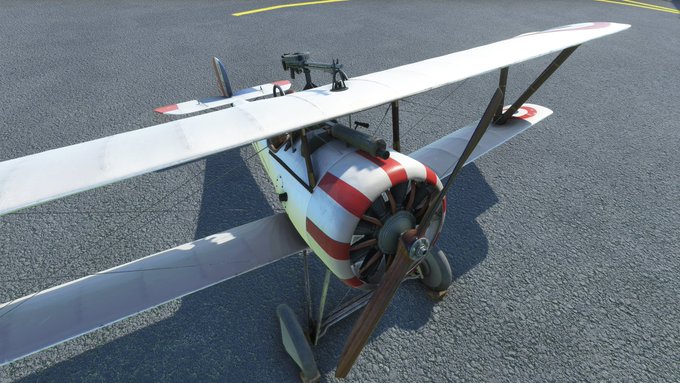
In addition to the synchronized Vickers machine gun below, this aircraft appears to have a second Lewis gun mountain atop the wing. Double trouble (but also can make the nose a bit heavy).
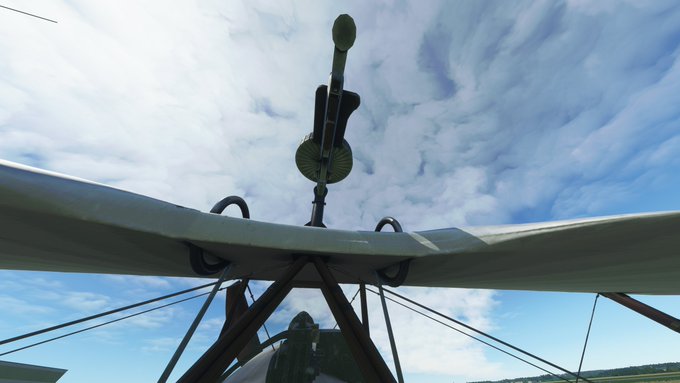
The Nieuport 17 is a sesquiplane, which means it has two wings but the lower is much thinner than the top one. This gives it the strength and some of the lift of a biplane but with lower drag.
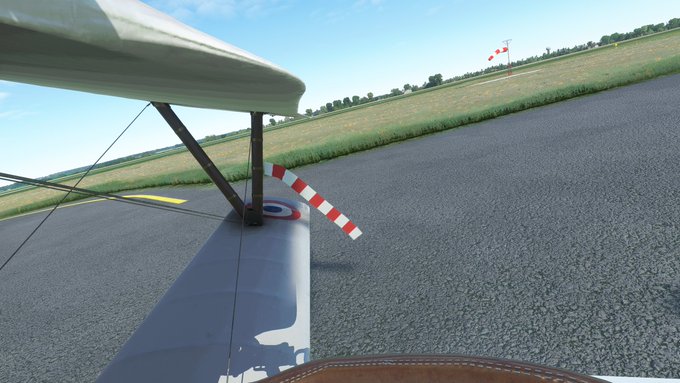
This particular aircraft bears the “Chief Sitting Bull” insignia of the Lafayette Escadrille, a French squadron comprised of American volunteers, before the US entered the war.
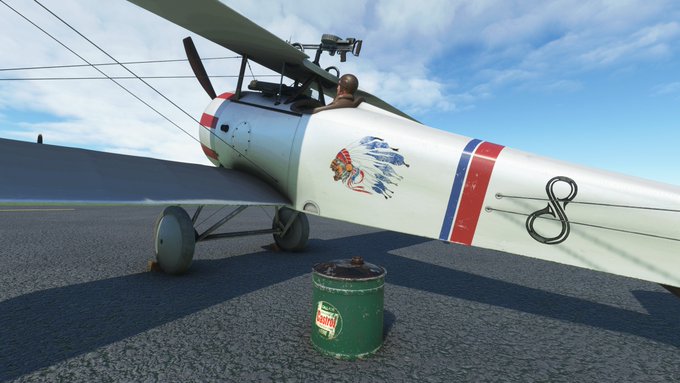
This one, #1977, was flown by Robert Soubiran, a US citizen born in France, who was also an avid photographer and took many photos of the Lafayette Escadrille.
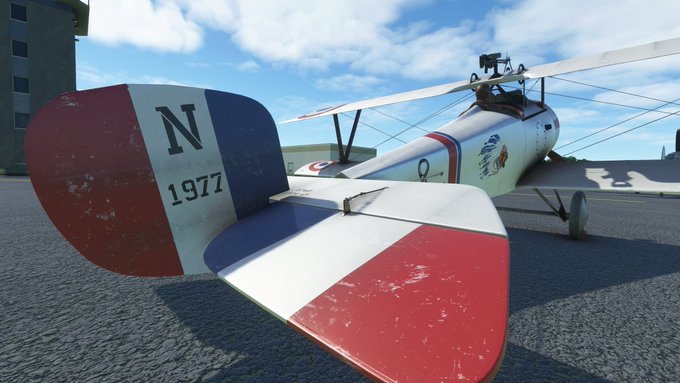
Here’s a photograph of Robert Soubiran standing beside his Nieuport 17 at Cachy Aerodrome south of Amiens in 1916.
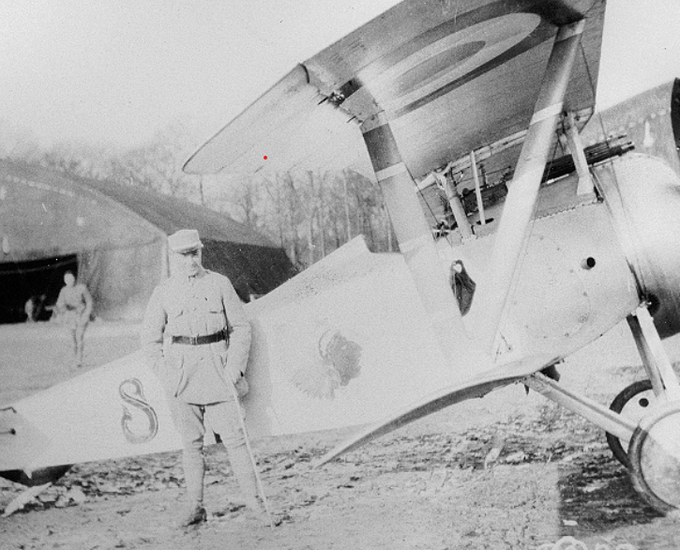
The Nieuport 17 was powered by a 110-horsepower rotary engine, which means that – unlike with a radial engine that might look similar – the cylinders actually spun around with the propeller.
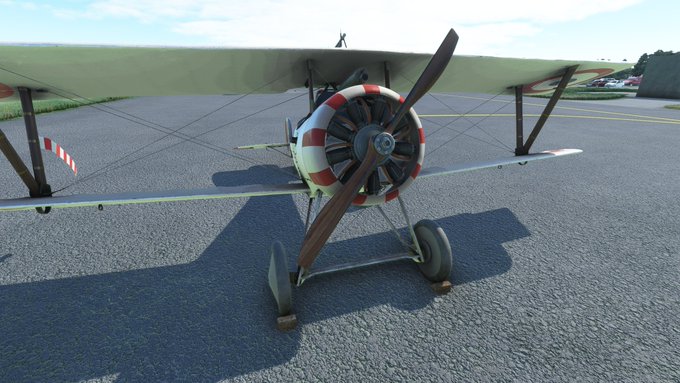
Here’s what that rotary engine looks like in action.
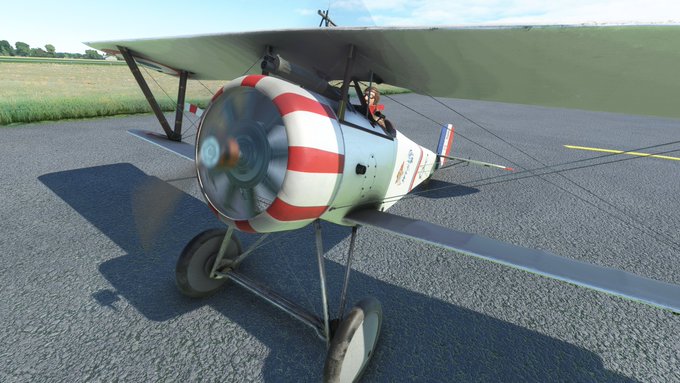
The inside of the cockpit is pretty rudimentary. To the left are the two magneto switches (to provide the electrical charge for the sparkplugs), as well as throttle and mixture levers. Instead of pedals, there’s a rudder bar across the floor, and of course a center stick.
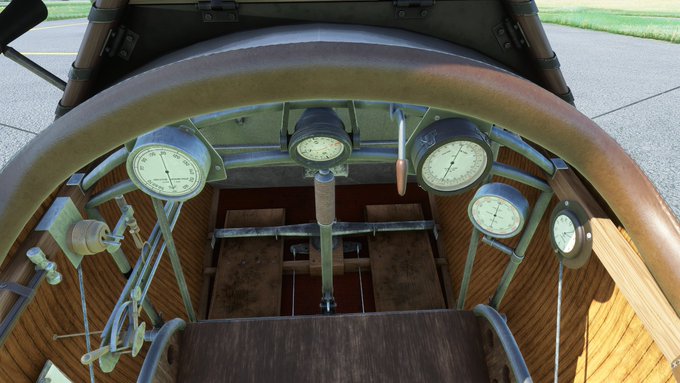
Here’s my airspeed indicator, start-up checklist, and recommended airspeeds.
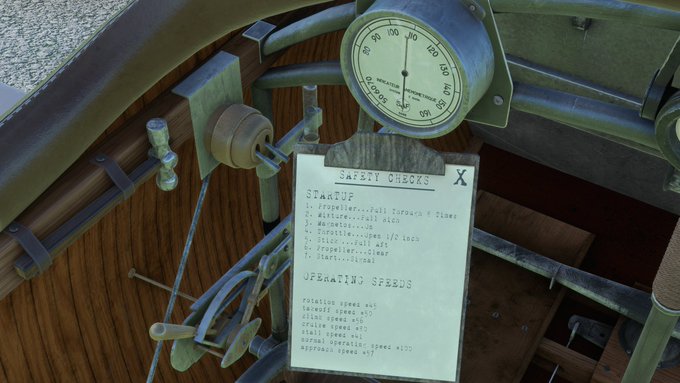
From the left, there’s a magnetic compass, the lever for firing the synchronized machine gun. On the right there’s a clock. I’m not sure exactly what the large middle two gauges, except I assume one is an altimeter.
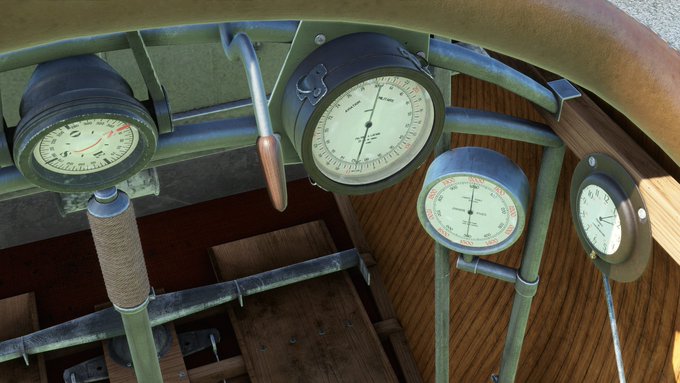
Most of the airfields used during World War I were very primitive and are now gone. But I found this airport with a grass runway just south of Amiens, close to Cachy where Robert was (at one time, at least) based.
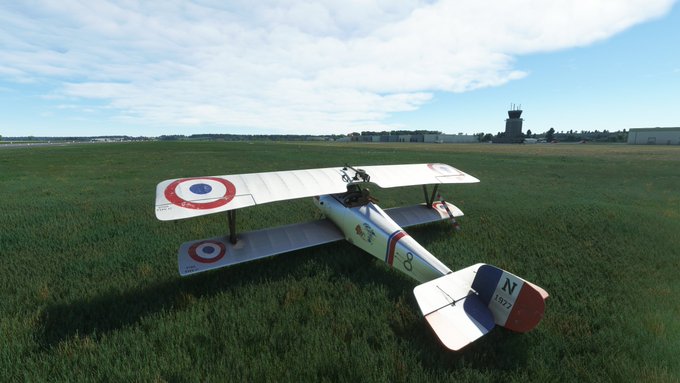
If he was here in 1916, he was almost certainly taking part in the Battle of the Somme, which lasted throughout the summer.
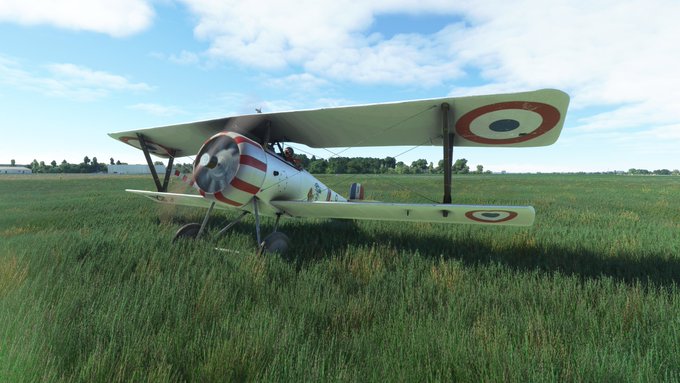
Taking off in the Nieuport 17 from south of Amiens, France.
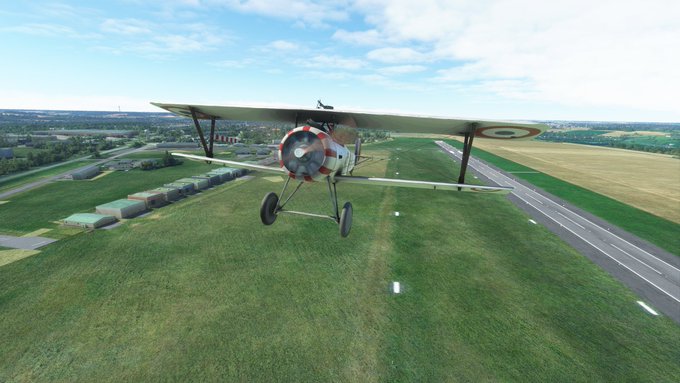
Until the arrival of the Nieuport 17, the Allies had been consistently outclassed in the air by newer generations of German Fokkers and Albatrosses.
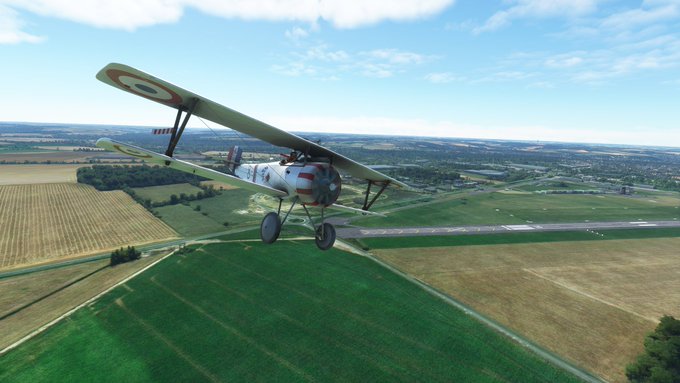
Though later it was largely replaced by the SPAD S.VII, many considered the nimble Nieuport 17 the most effective Allied fighter of the war. Multiple French, Belgian, Italian, Russian, and even British aces won that status flying Nieuports.
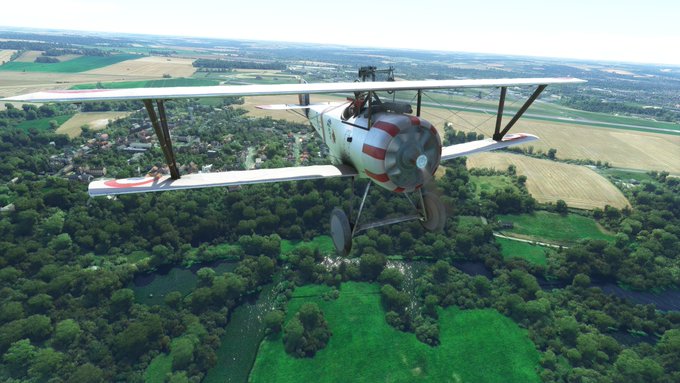
Flying east along the River Somme, past Corbie.
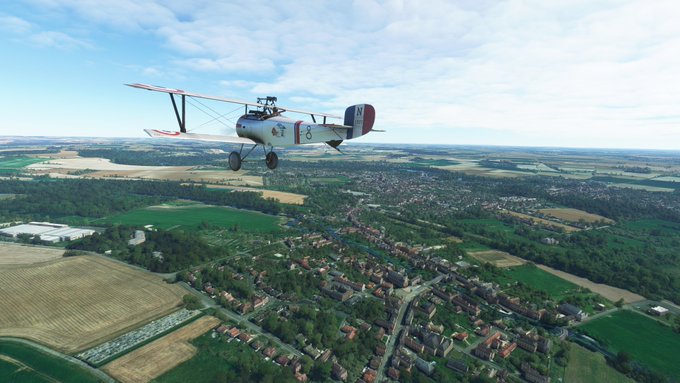
Even some algae below, on the marshy River Somme.
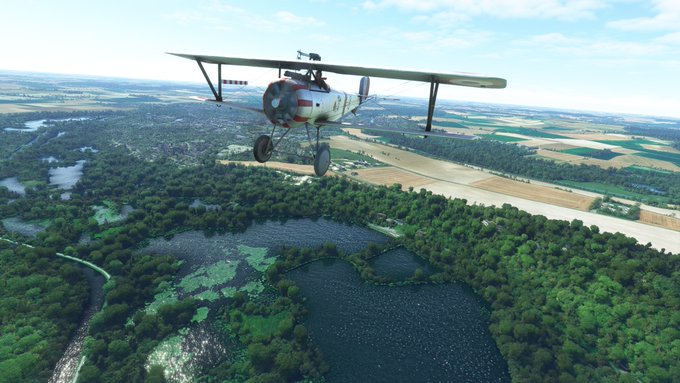
Flying a bit to the northeast, towards Albert, the British front-line logistical base for the Somme Offensive.
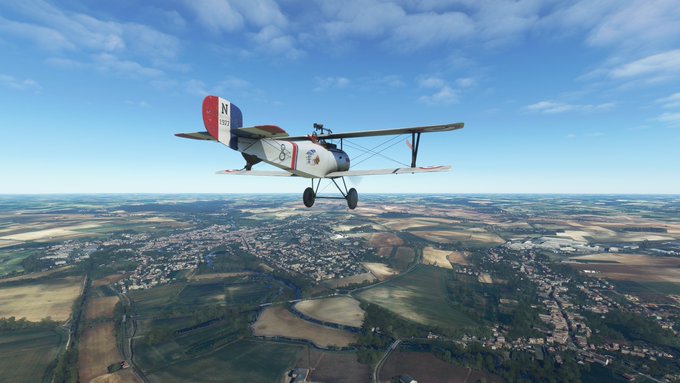
Coming in for a closer look at the Notre-Dame Basilica in Albert. Looks like it’s lost its tall steeple – thought that’s what it would have looked like in 1916, with the steeple knocked off by artillery fire.
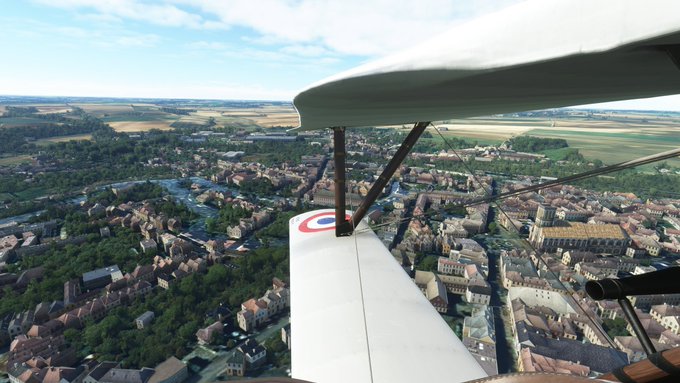
Thousands of British troops marched through Albert during the Somme Offensive, to and from their positions on the front lines.
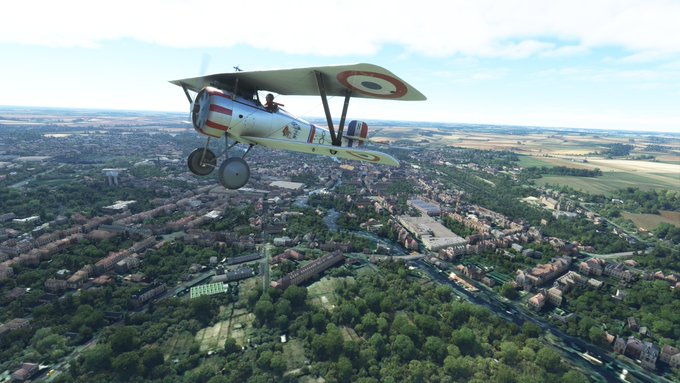
And just outside of Albert, the killing fields of the infamous “First Day of the Somme”, which German machine guns mowed down thousands of British troops coming “over the top” across open fields.
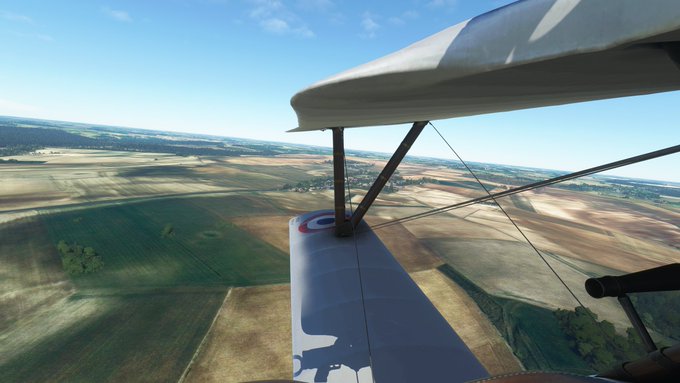
Fricourt, a village fortified by the Germans that became the scene of a fierce battle during the first days of the Battle of the Somme.
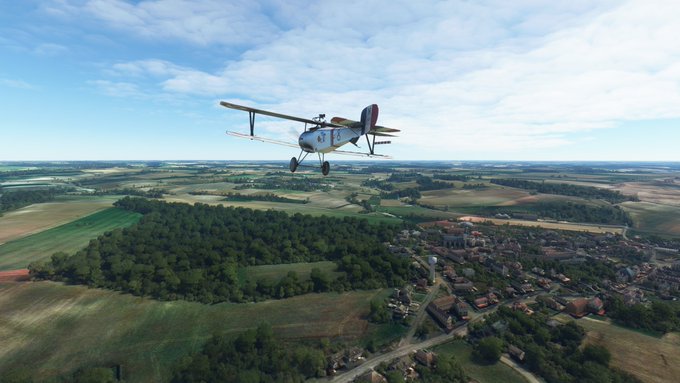
Trying out a couple rolls in the Nieuport 17, over the Somme battlefield.
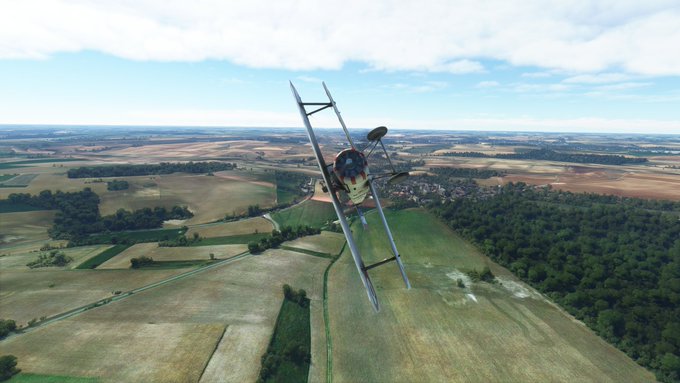
Now time for a loop. Aerobatic maneuvers like these were invented by the German fighter pilots, and were a critical component of aerial combat.
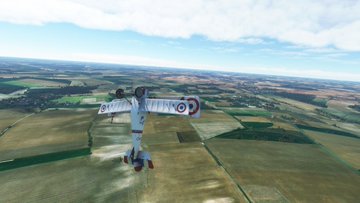
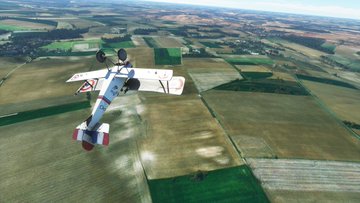
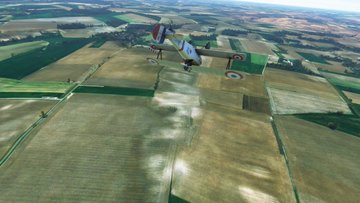
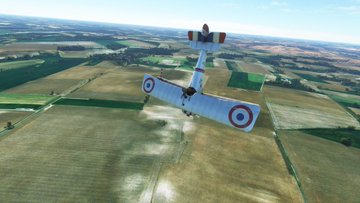
Here’s what it looks like from the cockpit. The engine sputters a lot because the inverted gravity interrupts the fuel flow.
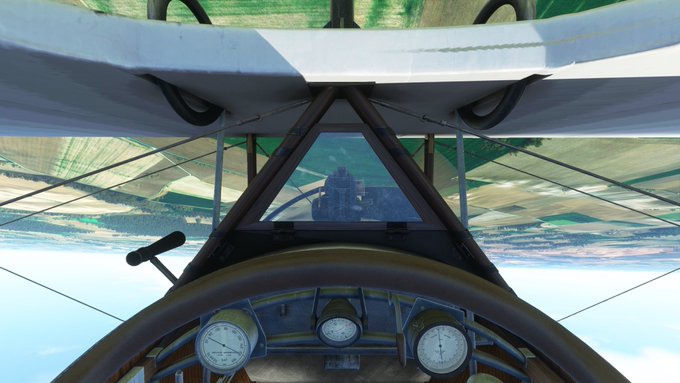
Following the meandering path of the Somme east, to Péronne.
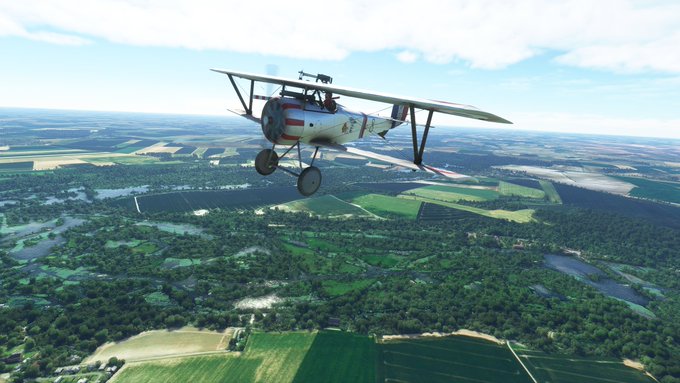
Péronne was in the southern, French sector of the battlefield. It was never captured from the Germans.
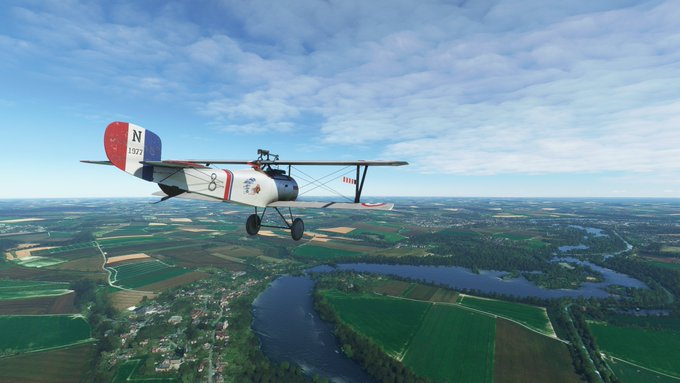
Today, Péronne is home to France’s National Museum of the Great War. Really excellent.
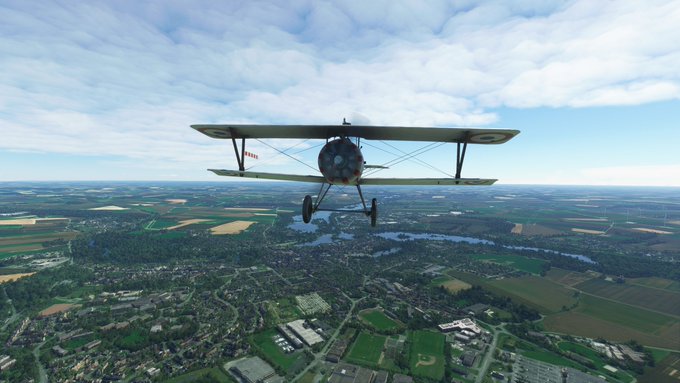
Here are some photos I took when I visited a few years ago:
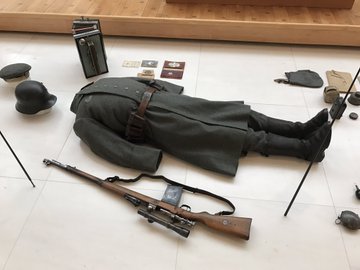
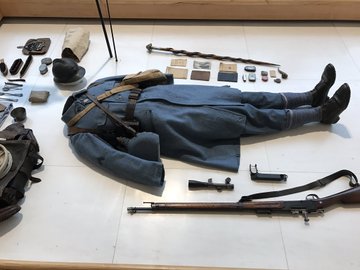
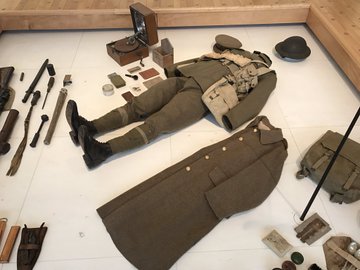
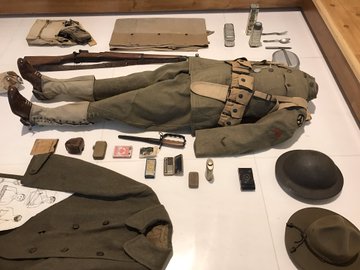
Heading north now, back into the British sector, where the largest – and costliest – advances were made.
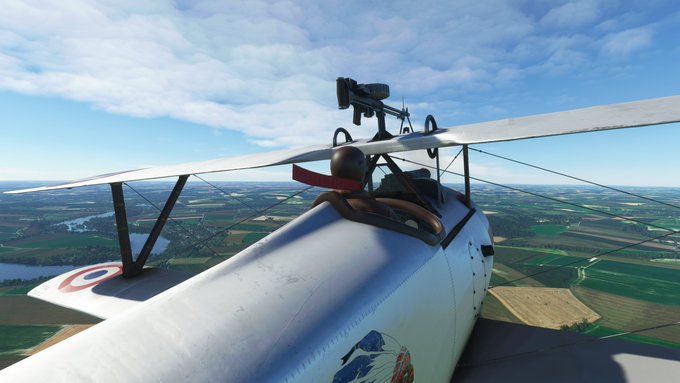
Flying north past Combles, which was almost entirely destroyed during the fighting when the Allies reached here by September.
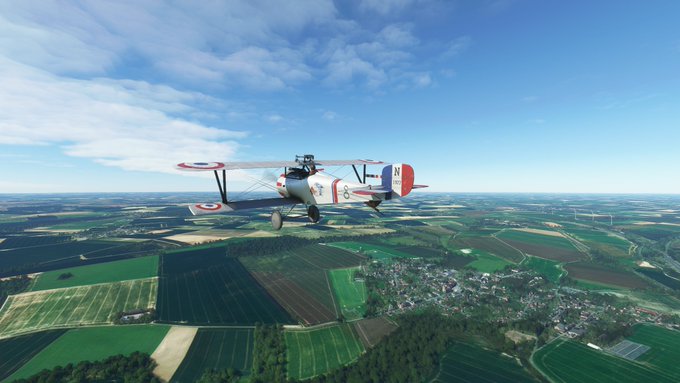
Here’s a map that may help visualize the area I’m flying over.
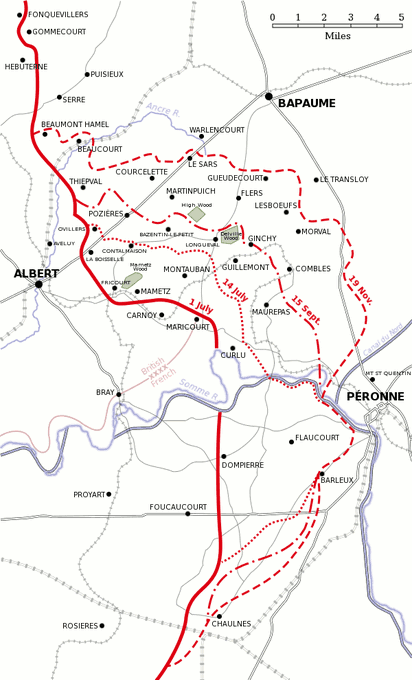
Just below is the village of Longueval, and next to it Delville Wood, both locations of fierce fighting in July and August. The tree-lined grass square is the Delville Wood Cemetery.
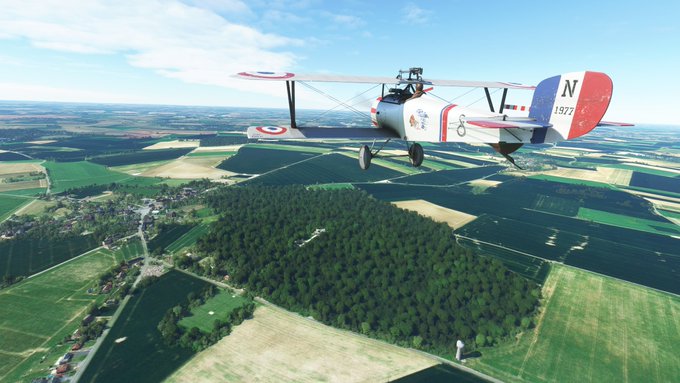
Here’s a photo I took of the memorial you can see standing in the middle of Delville Wood.
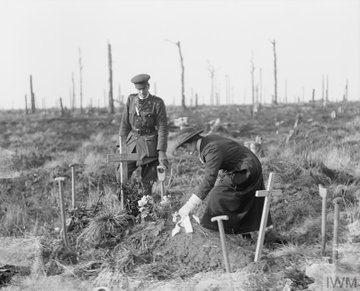
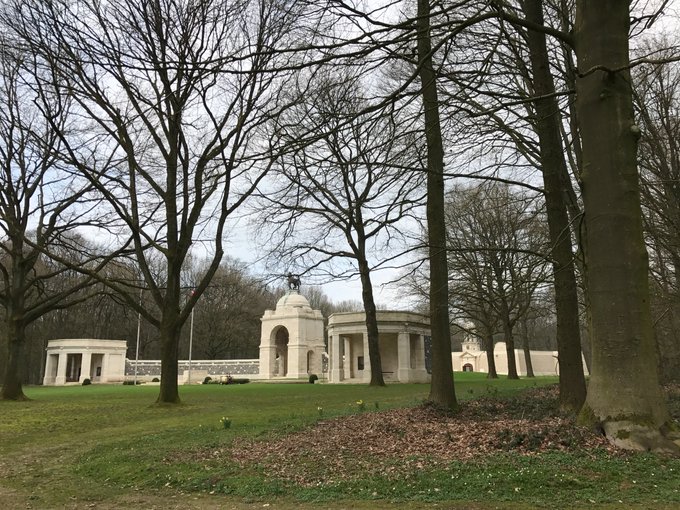
Just west of Longueval, below me, is the British “Caterpillar Valley” Cemetery.
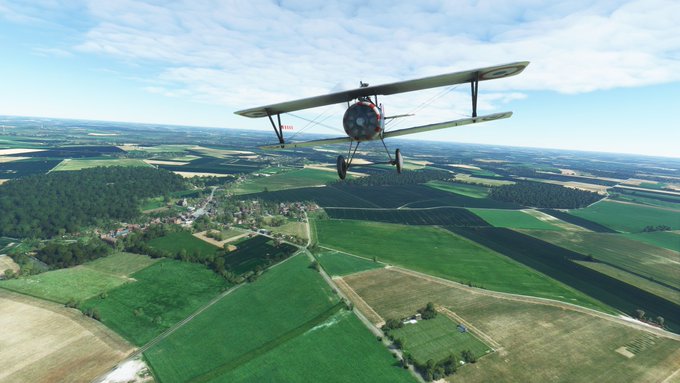
Just discovering that my front windshield can be lowered – I guess in case my machine gun jams. There’s also a hammer in the cockpit, maybe for the same reason.
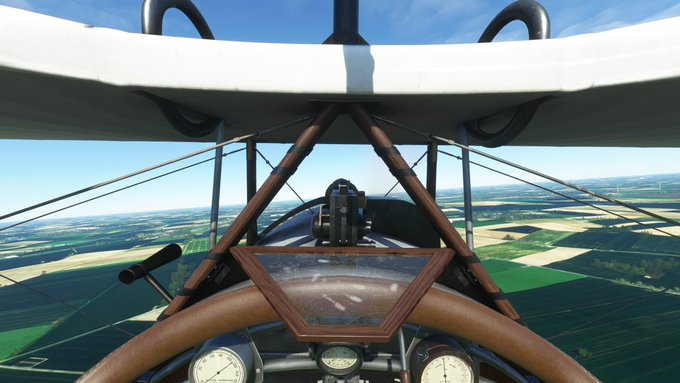
It’s hard to believe that these peaceful farm fields were once such scenes of devastation – and that unexploded shells are still uncovered in them today.
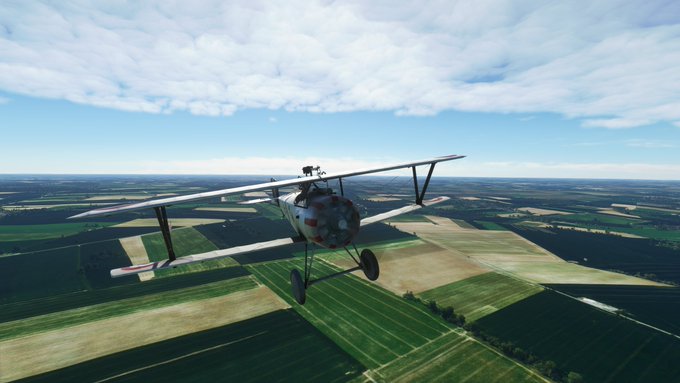
Turning west at Bapaume, the main British objective, which they did not succeed in capturing, and remained in German hands.
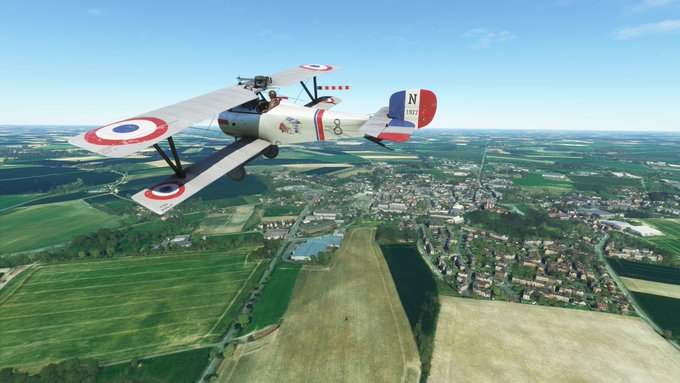
Having some more fun outside Bapaume.
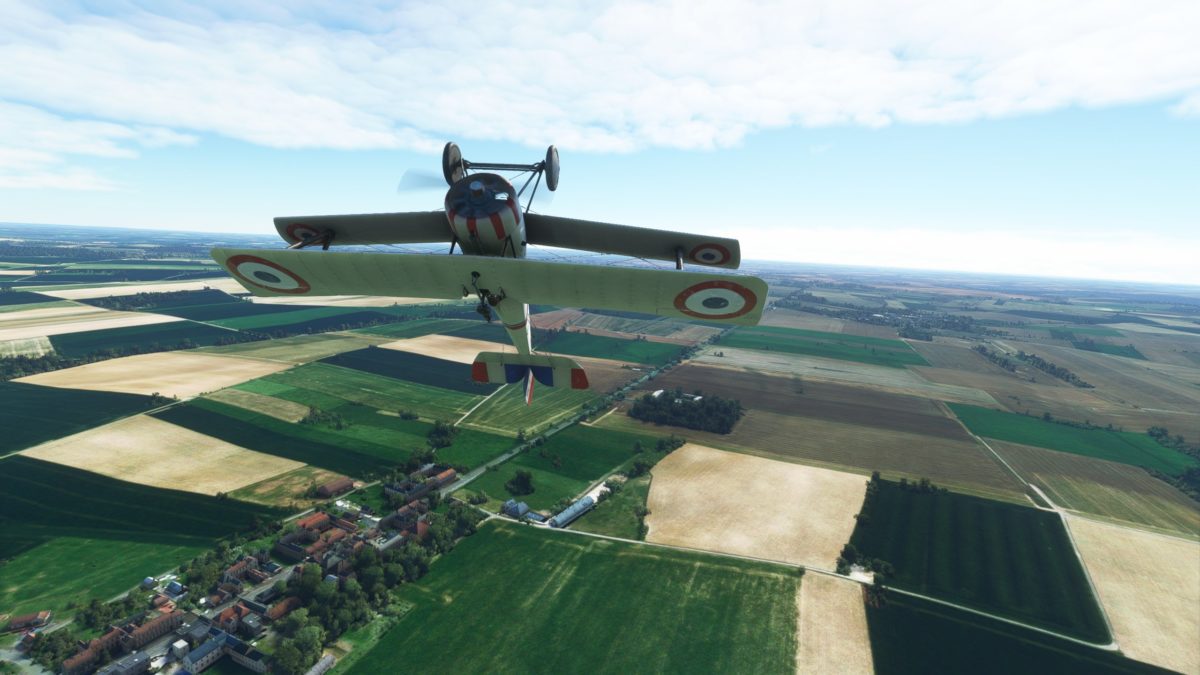
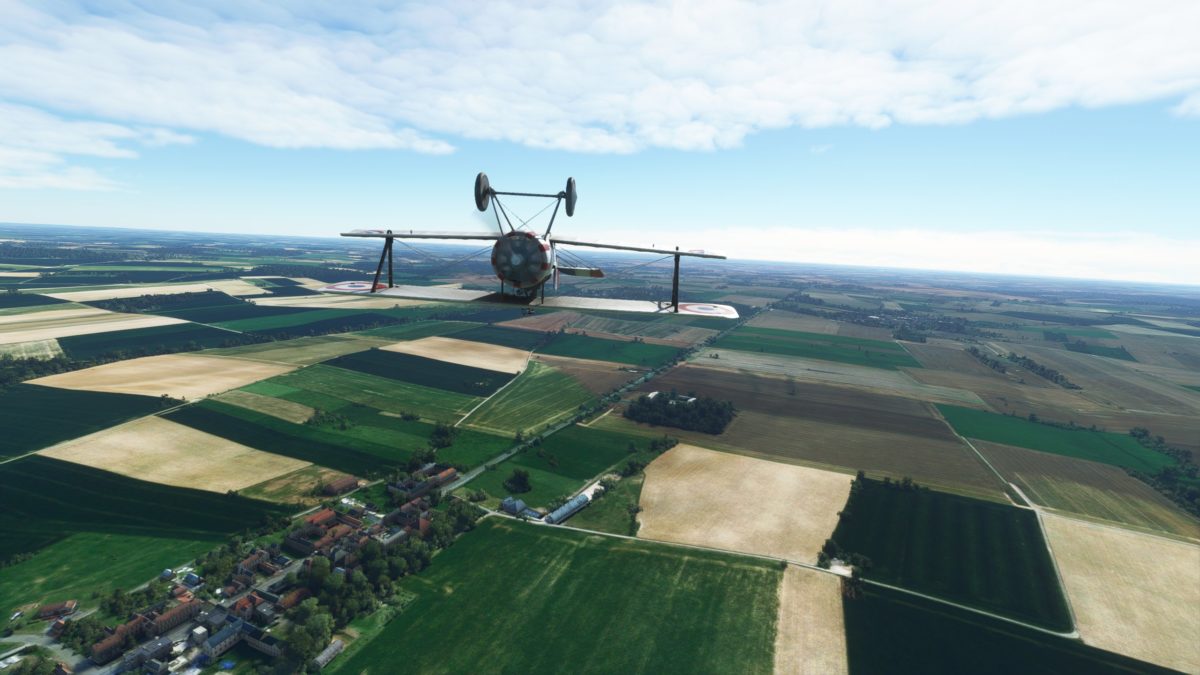
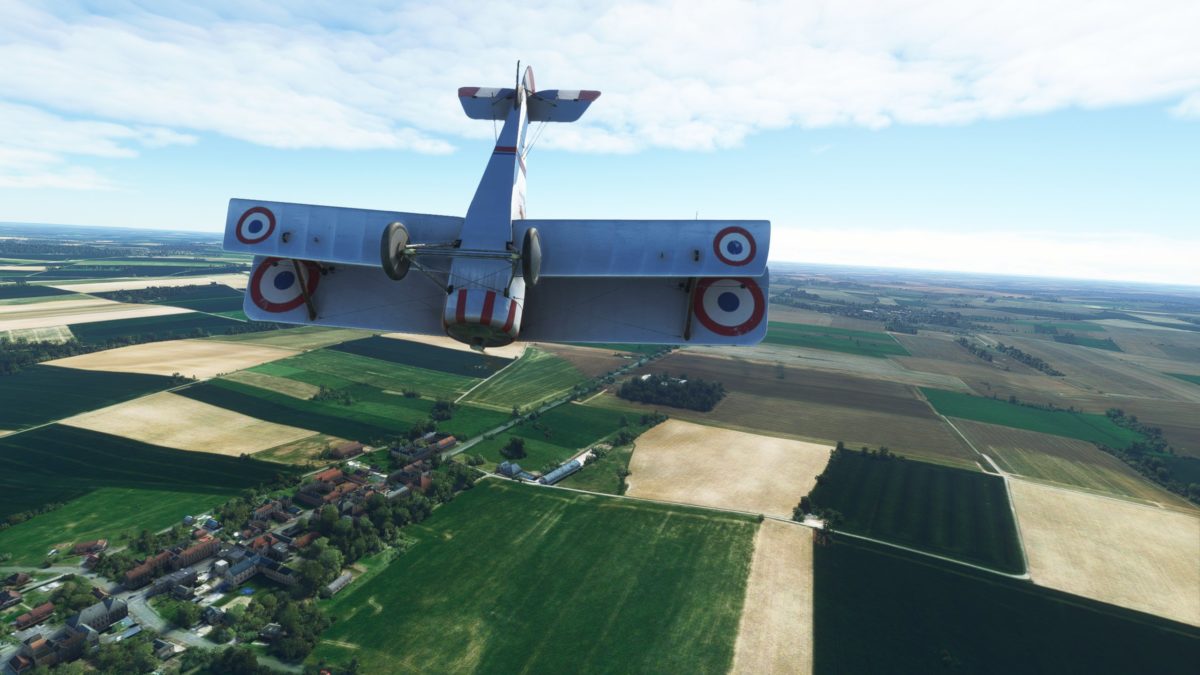
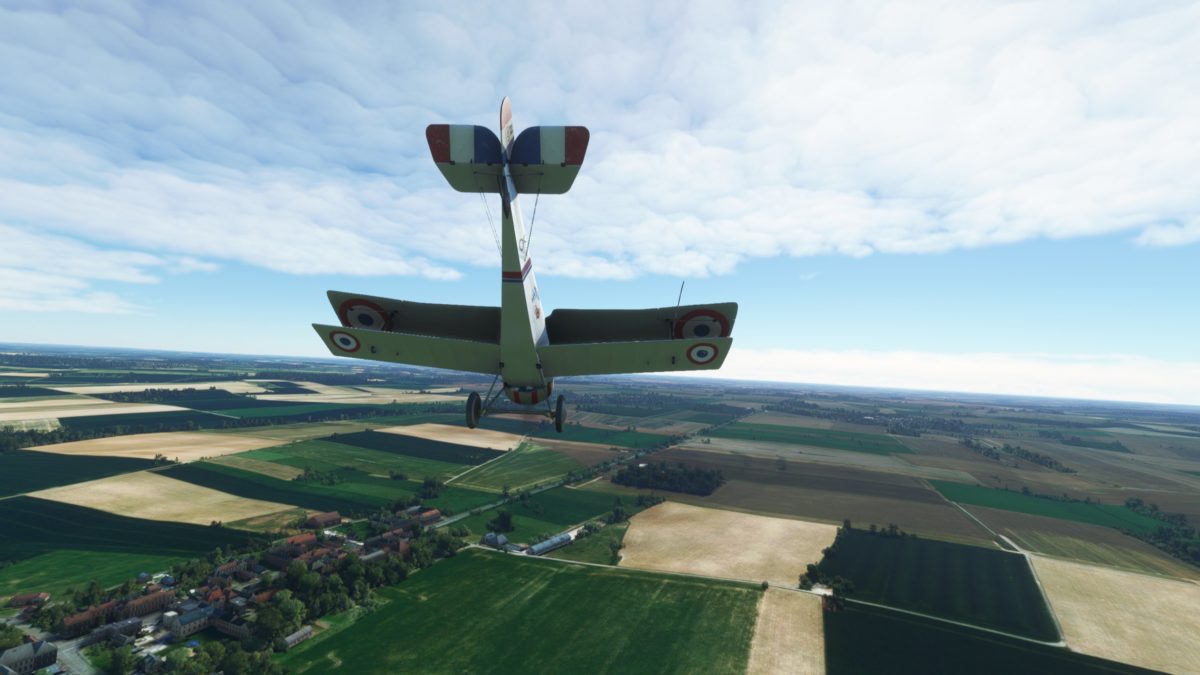
Woohoo!
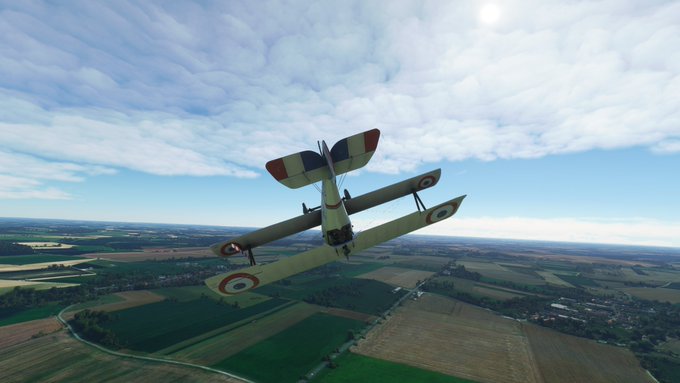
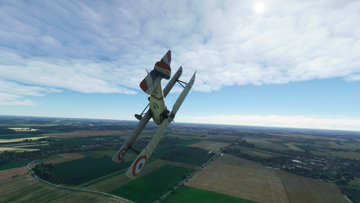
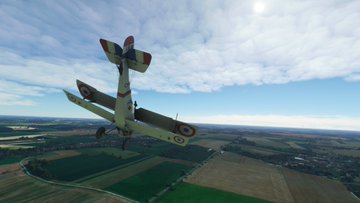
Yikes.
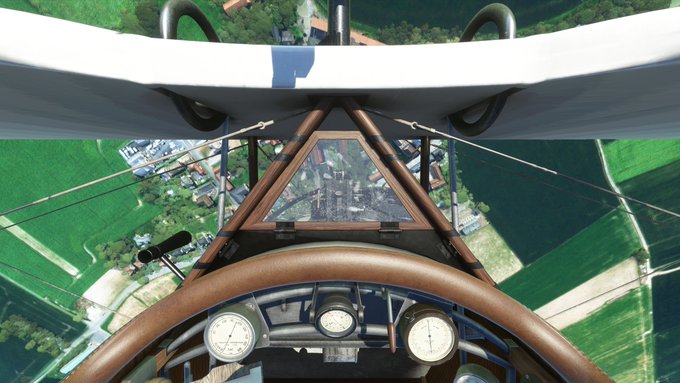
That straight-line road ahead of me is the main road from Albert to Bapaume, the main thrust of the British advance.
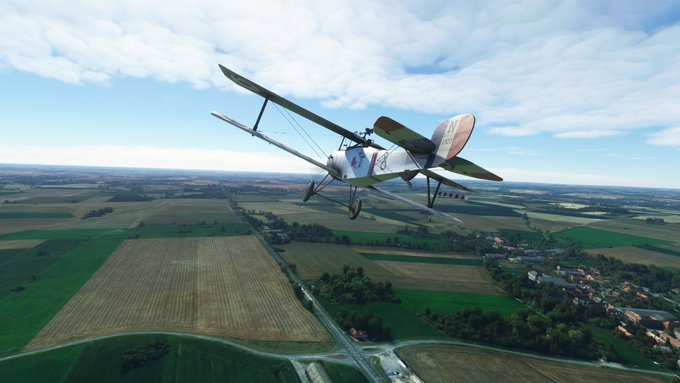
The area just below me, east of the village of Pozières, was the site of the first tank attack in history, launched by the British. Most of them broke down.
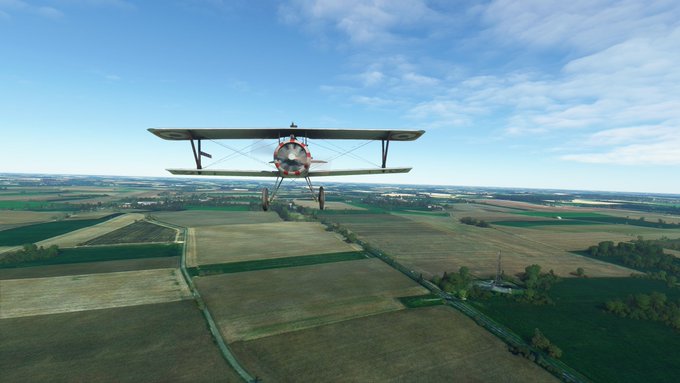
Close by, near the River Ancre, is the memorial on Thiepval Ridge. The Germans were well fortified here, and though it is fairly close to their starting point outside Albert, the British were only able to take it in September with heavy casualties.
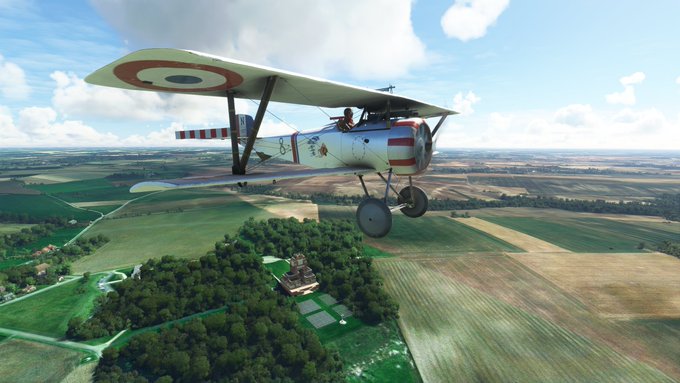
Following the River Ancre back south towards Albert.
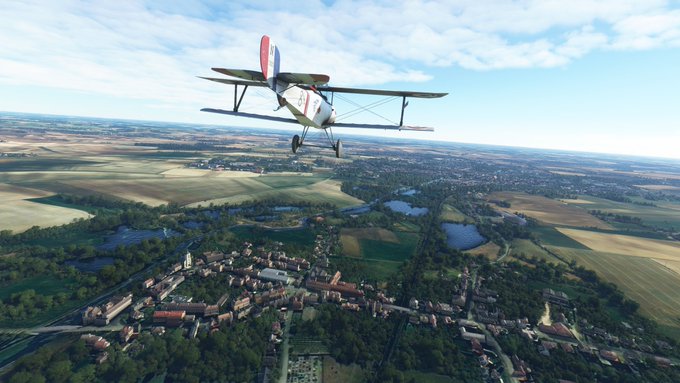
Flying over Albert again. You might be wondering what happened to our pilot, Robert Soubiran.
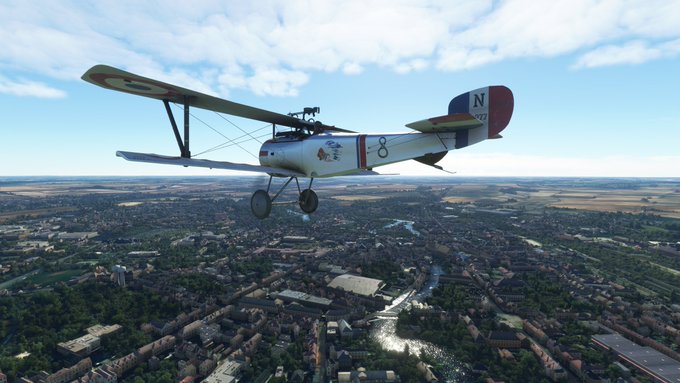
Soubiran transferred to the US Army when the US entered the war, with the rank of Captain. He flew over 400 hours of combat flight time in his 23 months with the French Air Service and in 10 months with the US Air Service.
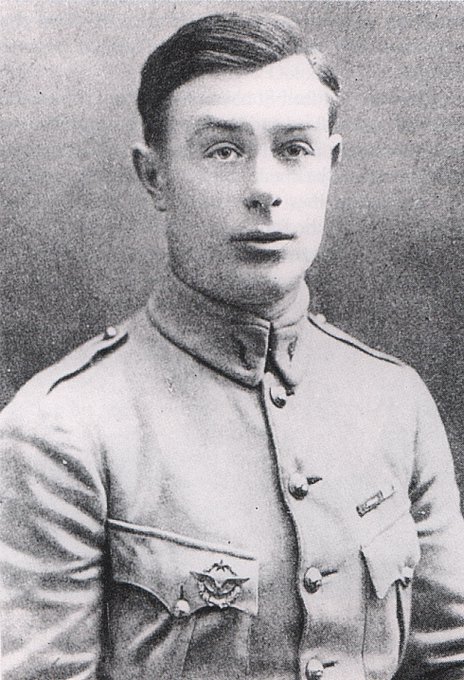
He survived the war. I wasn’t able to find much about his post-war life, but he apparently lived until 1949 in Queens, New York.
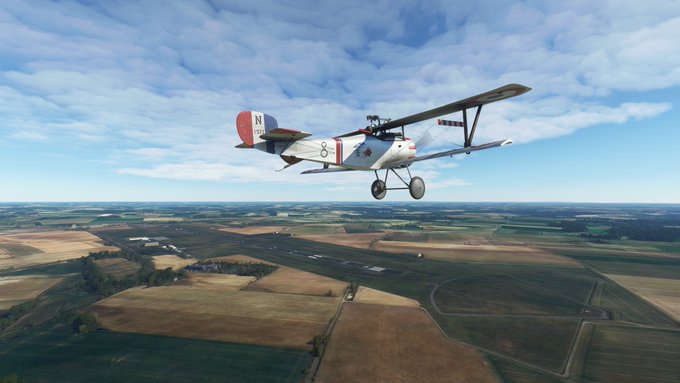
I’m going to try to land on the grass strip next to the modern paved one here, just south of Albert.
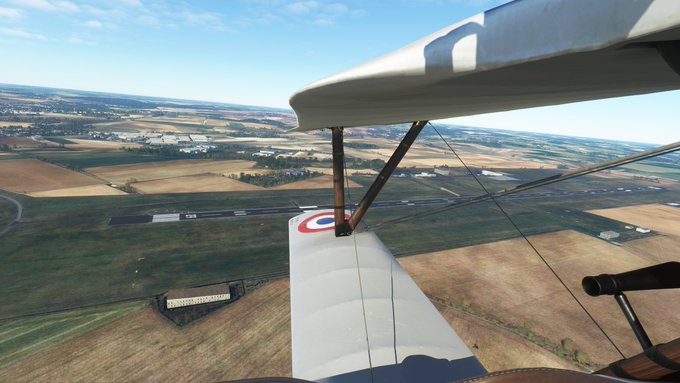
You really really pick up speed when you descent in this thing, even if you cut the engine entirely.
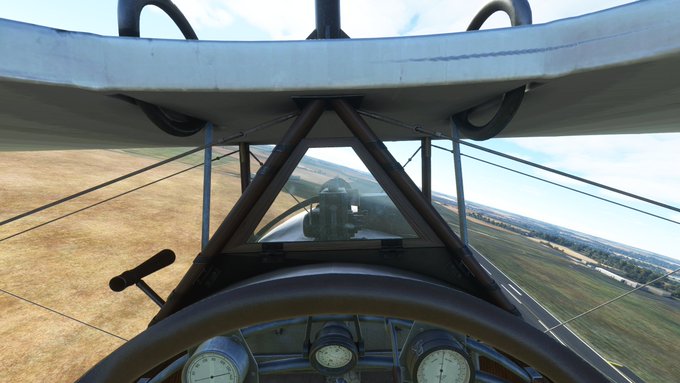
As a result, I floated about halfway down the runway and then some before the Nieuport 17 wanted to land. Also, once you land you have no brakes, just friction.
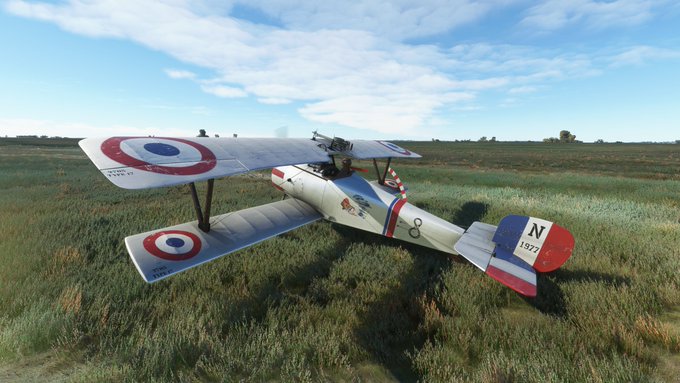
Well, I hope you enjoyed this introduction to the Nieuport 17 and the wartime career (at least) of its real-life pilot Robert Soubiran, as well as the tour of the Somme battlefield over which it flew.
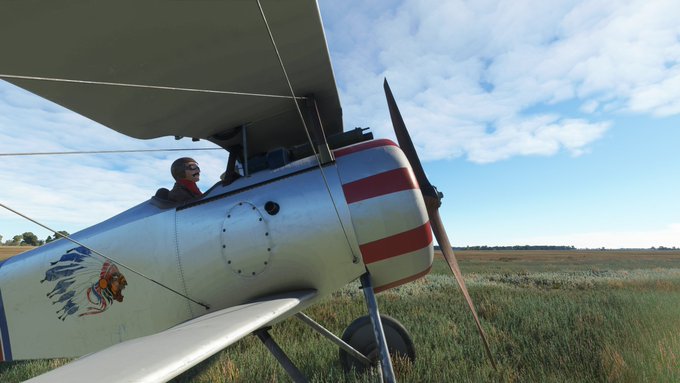
Leave a Reply